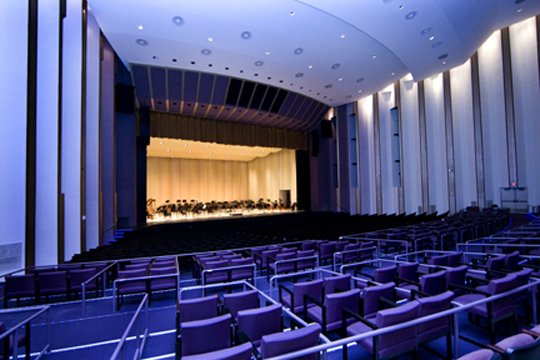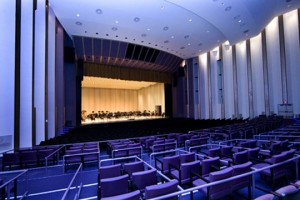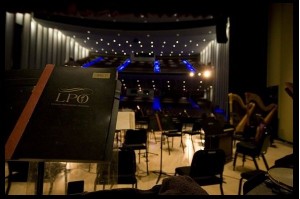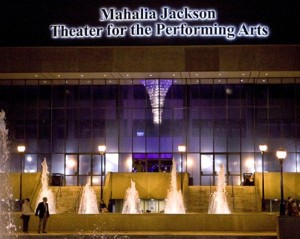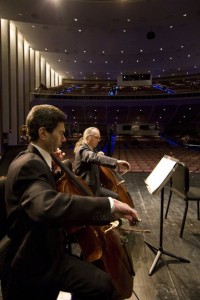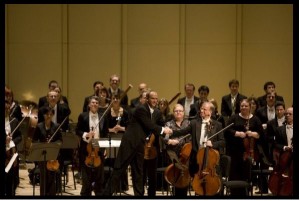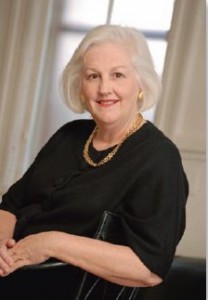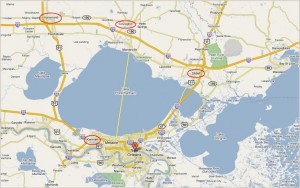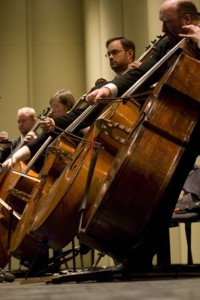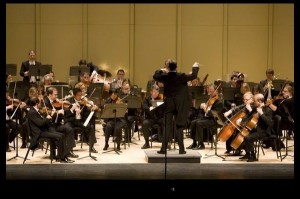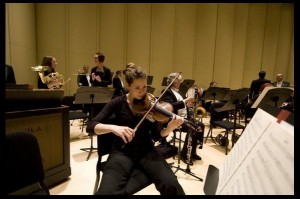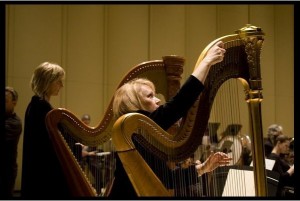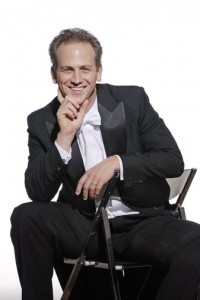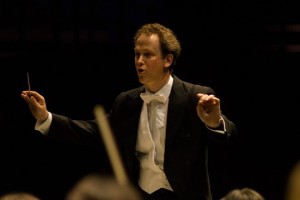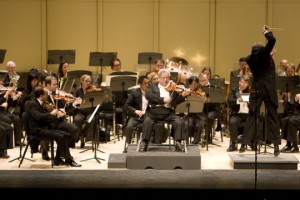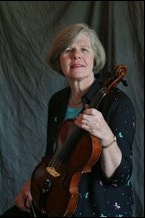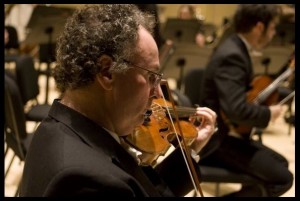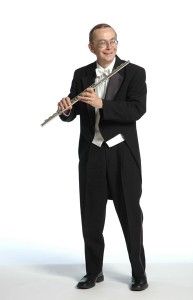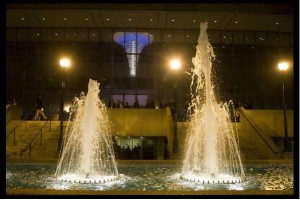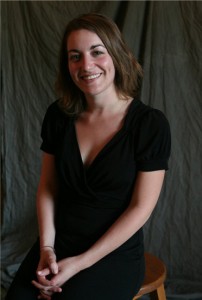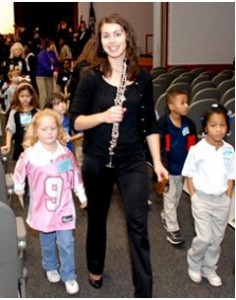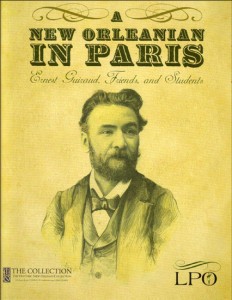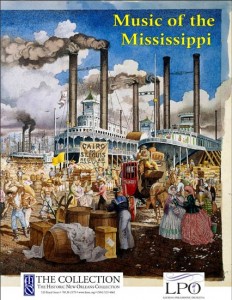Louisiana Philharmonic Orchestra
About the Orchestra
The Louisiana Philharmonic Orchestra (LPO) has had a difficult history – formed in 1991 as a musician-owned collaborative orchestra after the bankruptcy and demise of the New Orleans Symphony, the early years were lean ones for the musicians. The musicians performed all administrative tasks and split what funds were left over after paying all the bills.
As the years went along, they invited community members to join their board, hired an administrative staff, and were able to pay themselves a regular salary or “share” – they started to look like a “regular” orchestra but the musicians still owned the orchestra. Their governance structure is unique among American symphony orchestras, and the hard work and dedication of the musicians had finally payed off as they completed their 2004-05 season: a very successful organization enjoying great community support and artistic excellence, and with a new music director designate announced – Carlos Miguel Prieto.
Then came August of 2005 and Hurricane Katrina, which not only devastated their beloved city, their hall, and many of their homes, but also threatened their very existence. Amazingly, the LPO not only survived but rebounded, and is now stronger then ever. About 60% of the musicians who played the 2004-05 season are still with the orchestra, their salaries are higher than before the hurricane, they have a full 36-week season, and the support from the community is stronger than ever.
On January 10, 2009, the City of New Orleans re-opened the newly restored Mahalia Jackson Theater for the Performing Arts with a gala concert featuring the LPO and Itzhak Perlman, New Orleans Opera, and dancers from the New York City and San Francisco Ballets. The orchestra will perform some of its season in the Mahalia Jackson Theater, but must share it with the opera, ballet, and touring Broadway shows. Their real home, the Orpheum Theater, is still in ruins from the storm, so they’ll continue to perform in a variety of churches, university theaters, and other venues around greater New Orleans.
I spoke with several constituents of the LPO to get a full sense of where they are today, 3 1/2 years after Katrina. The story they have to tell is inspirational.
Cellist Annie Cohen, past President of the LPO, talks about life for the LPO post-Katrina, their new hall, and how the new members of the orchestra are adapting to the LPO’s unique governance structure. In August 2006, Annie wrote an article for Polyphonic marking the one-year anniversary of Katrina, describing in detail the horrors confronting the orchestra immediately after the storm, and how they managed to triumph to put on a season in the spring of 2006, with lots of help from colleagues around the country.
Katrina and the Louisiana Philharmonic
Managing Director Babs Mollere talks about the amazing support the orchestra has received from the community, and how the orchestra, in return, has reached out to the greater New Orleans community to become their regional orchestra, with a home base in the city of New Orleans. The challenges of Katrina have brought changes and new audiences to the LPO; she describes some of the new venues and new series they now embrace.
Music Director Carlos Miguel Prieto describes his personal experiences following the August hurricane with the musicians of the LPO, the fund-raising concerts in Nashville and New York City, and their first truncated post-Katrina season in the spring of 2006. He speaks with great passion about his own connection to music, and the equally passionate connection between the people of New Orleans and their symphony orchestra.
Violist Valborg Gross, outgoing chair of the Concert Committee, describes the collaborative process by which the LPO plans each season.
Principal Flutist Dean Miller reminisces about his four decades playing with the symphony in New Orleans, first with the New Orleans Symphony and then the LPO.
Associate Director of Education Amanda Wuerstlin describes the many educational performances presented by the LPO to the school children of New Orleans. She also provides more detail about the new series the LPO is presenting, in collaboration with the Historic New Orleans Collection, about the history of classical music in New Orleans.
All photos, except where noted, were taken by Judi Bottoni.
Ann Drinan, Senior Editor, February 2009
Interview with Ann Cohen, ‘Cellist
Annie Cohen joined the New Orleans Symphony in 1978, and has been a member of the Louisiana Philharmonic (the successor to the New Orleans Symphony) since its inception in 1991. She served as President of the LPO (a collaborative organization) three different times. In addition, Ms. Cohen has been an LPO board member, has chaired development and personnel committees, and has participated in the Mellon Orchestra Forum with colleagues from fourteen other orchestras. Annie holds a B.M. from Oberlin College.
Ann Drinan: So, how are things with the LPO these days?
Ann Cohen: Surprisingly good. The opening of the Mahalia Jackson hall was a big success – we had sold out audiences, and book-ended our concerts with the opera. We opened with Itzhak Perlman and shared the night with the ballet. The opera closed the opening week of festivities with Placido Domingo. Both the opera director, Robert Lyall, and our music director, Carlos Miguel Prieto, conducted.
AD: What’s the current condition of your regular theater?
AC: Our regular theater was the Orpheum Theater, several blocks from the Mahalia Jackson Theater – it took in a lot of water from top and bottom.
AD: Did you lose your music library?
AC: Thankfully our library wasn’t in the hall. But we did lose instruments, chairs, stands, etc.
AD: Tell me about the new hall.
AC: The Mahalia Jackson re-opening is a back-to-the-future kind of thing – the orchestra played there beginning in 1973. We moved to the Orpheum Theater in the early 1980s and played there until Katrina hit. Both theaters went under water; both theaters were in a heavily damaged part of the city. The Mahalia Jackson theater is city owned – Mayor Ray Nagin stepped up and got it rebuilt ahead of other projects because of his belief in the importance of the arts to this community. He did a good thing here. The renovations were funded with FEMA money and city money.
AD: How many musicians did you lose to Katrina? Meaning how many just didn’t come back to New Orleans after the storm?
AC: About 60% of the pre-Katrina orchestra is still in New Orleans. It was a critical time, as you can imagine. How many came back was a combination of the storm, people close to retirement deciding to do so, and actual physical and emotional blows – some people just simply had to leave. There were several months where it was all up in the air. People moved on especially if they lost their homes, or had special needs in their families that couldn’t be met now in New Orleans. I’m the current chair of the Personnel Committee, and this year we did annual reviews for 26 people [out of 67 contracted members] for tenure.
AD: How did you find new members after the storm?
AC: We had regular auditions in the spring after Katrina, once we were committed to a season.
AD: How big is your season now?
AC: 36 weeks – while it ran only January through May in 2006, we went back to our regular 36 weeks in the fall of 2006. Our salaries are higher now than they were before Katrina. Our base pay is $25,000 now; several years ago we added longevity pay and two years ago we began to add to principal overscale which now sits at 15%, with smaller increases for other titled positions as well.
AD: Describe your governance structure.
AC: We are a highly collaborative organization – legally it is the musicians who vote in the community members of the board and we could vote them out (in our wisdom). None of that has changed. Increasingly, our staff does much more of the work we used to do, but it’s still a huge committee orchestra. We have 11 musicians on the board, our co-treasurer is a musician, and everybody is invited to any meeting they wish to attend.
AD: How have your new post-Katrina musicians adapted to your collaborative structure – they make up almost 40% of the musicians now!
AC: So much of the founding of the LPO was driven by “you had to do it” – we just stepped in and did it because we had no choice if we wanted to have an orchestra after the New Orleans Symphony folded. The new people walk into a situation that functions quite well, with no labor strife, so they don’t necessarily understand what we’ve been through. We do have orientations for them at the beginning of the season about our structure and committees, how important participation is, etc. We try to explain what the structure means, why it works the way it does, and give them some financial information so they can begin to read a P&L sheet. We try to bring them along that way and get them involved in various committee structures, but it can be challenging.
Everything must be on the table about how you approach various issues. The collaborative process is so important – it must be owned by the entire community and every constituency must feel that ownership. The union, the business community, the audience, the musicians – all have an ownership piece and must work together so that the organization not only survives but, in fact, thrives.
Sometimes I feel that other orchestras have arbitrary working rules – we know the history of where these rules came from but now is a fine time to find the opportunity to change them. It’s important to honor the history of the union and principles of unionism, but this is a different time economically and it’s important to find work situations that work to the benefit of all of us. Talk, collaborate – we all have responsibility for the future of the orchestra.
Interview with Babs Mollere, Managing Director
Ann Drinan: How is the Louisiana Philharmonic faring, now in your 4th season post-Katrina?
Babs Mollere: We’re back to a full schedule with a budget of about $4 million and just celebrated the gala re-opening of the Mahalia Jackson Theater.
A few words about the storm – I must say that Carlos Prieto, our music director, was a big part of the story of our recovery after the “weather event” (that’s what we like to call it down here). He had signed his first contract in June and Katrina hit us in August. He could have walked – there’s a force majeure clause in his contract. But he stayed and he’s been a wonderful spokesperson for the orchestra, preaching the importance of the symphony to the community, especially in abnormal times.
We also only had to return about $12,000 in ticket revenue in the first post-Katrina season. CRStager marketing was working with us back then and suggested that we offer subscribers the same number of experiences. They were obviously different experiences, as the Orpheum Theater was under water and we performed a lot of chamber concerts in churches, but our subscribers went away happy and came back the next fall in 2006.
Following the hurricane, the vast majority of the orchestra returned. Some people didn’t return for the same reasons the population didn’t return – they didn’t have a house, they had specific family needs, etc. So we do have a lot of new musicians since 2005.
AD: Tell me about your concerts that first season.
BM: The Louisiana Philharmonic originally envisioned itself as a regional orchestra – we went as far afield as Mobile Alabama, but then over time we became centralized in greater New Orleans. After the hurricane, we needed to be a regional orchestra again – we consider ourselves to be home-based in New Orleans yet serving the entire region. That’s what happened to the population – many are still living in Louisiana but they’re spread out. We followed the same pattern because we didn’t have a home hall for performances – we’d dip our toe in the water where we knew there was a population – a potential audience.
This drove us to expand to Covington on the North Shore, on the edge of St. Tammany Parish. We’ve historically performed in Hammond and Slidell, but we’ve never really gone to the North Shore with a full series because of the lack of a performance facility. After Katrina, many people from St. Bernard Parish moved there, so with the increase in population, and given that we were performing in churches anyway, we decided to bring the symphony there. They have a future performance facility on the drawing board, but it’s not going to happen anytime soon.
This new series is in Covington, where we repeat four of the concerts from the Classics Series, bringing them some fine soloists. We were not successful in getting people to come back to New Orleans for performances, so this experiment of moving to the North Shore provided a real value for people in that parish. We weren’t selling seats because all we have are pews, so we’re selling sections, making the price lower than our Classics series – it made a lot of sense!
AD: What are the various concert series that make up your current season?
BM: We have a 36-week season and do a full Classics Series of 13 concerts, this year featuring all nine Beethoven symphonies in order of composition. We perform in various venues around the city and the region, sometimes doing doubles because some university settings only seat 500. We joke that we’re the “Baptist Church Orchestra” because we perform at the First Baptist Church in New Orleans, the First Baptist Church in Covington, and the First Baptist Church in Kenner, in Jefferson Parish.
We also have a Spotlight series – what most orchestras would call their Pops series – we changed the name a few years ago so that we could put a spotlight on some other musical talent. Terence Blanchard did his Requiem for Katrina with us in 2007, and the orchestra recently reprised it at the Jazz Fest. Given the huge variety of talent in New Orleans, the Spotlight series makes more sense than a Pops series.
The hurricane gave us a reason for all kinds of change that we might have been wary about before – it was freeing (given that all things were thrown up in the air). We’ve frequently looked at other musicians in New Orleans and done concerts with them. There is so much emphasis on music in our community – music and food and architecture are so important to New Orleans. After the storm, lots of barriers were down, and we were examining how we could all help each other make it. When we came back and started the Spotlight series, we wanted Terence’s Requiem to be performed here. The name change took away the old feel – there had been a New Orleans Summer Pops that had not been done for many years – and allowed us to do different kinds of things.
We have a local life insurance company who wanted to focus on Carlos being from Mexico, to attract the Mexican community in New Orleans. This has given us the opportunity to broaden our focus and feature mariachi music for two years. It’s all about how we’re connecting with the community.
AD: The LPO is the only musician-owned symphony orchestra in the country. How does the governance process work for you, as Managing Director?
BM: It’s a very interesting process because the governance model is so different still, even though many other orchestras have moved towards more musician involvement. We’ve had the recent challenge of moving our new musicians into involvement – there’s a larger group of new musicians than usual because of Katrina. How do we acquaint these people with the fact that we want them to get involved but also have a fairly traditional tenure process? There’s a reluctance about getting involved right away, as they’re coming out of the conservatory – it’s been a process for us to figure out. But now, in 2009, we have had enough time for a goodly number to get tenure and they are beginning to move into leadership roles, becoming trustees, getting involved in committee work, etc. This is a hallmark of this orchestra and is a real necessity.
We use the three-legged stool model – musicians, staff, and trustees. Without that close working relationship, we really would not have made it, both after the demise of the New Orleans Symphony and after Katrina. The foundation of trust was there between the staff, musicians, and community trustees. We spent very little time off the real fundamental things we needed to solve in order to move ahead.
AD: Who serves on your board of trustees?
BM: The board of trustees started out with only musician members, but over time we added community trustees. They are now the majority. The musician committee is elected by the orchestra and it sits at the top. We have both a president of the board of trustees and a president of the orchestra (who is a musician). All trustees are either musicians elected by the orchestra or community members put forth by the Nominating Committee (made up of musicians, staff, and trustees) – community board members must be approved by the orchestra. All committees have community and musician co-chairs except the Personnel Committee, which has no community members or staff, and the Concert Committee, which does the programming. The staff sits in on the Concert Committee but has no vote – just a voice of persuasion!
AD: As the chief staff person, do you find the governance model cumbersome to work with or is it now just part of your organizational culture?
BM: The governance side of the LPO is unique and in our particular world, it has functioned well. It’s not problem-free, as it takes more time for us to do many things because of the three-legged involvement, but it truly is one of the main strengths of the orchestra. We have no lack of trust about the availability of information and the transparency of information. The musicians write a collective bargaining agreement each year after we go through the budgeting process – it takes them one day. We don’t bargain in the traditional way of labor/management. Once we’ve gone through the budgeting process and it’s moved to the board of trustees, that setting of the share (as we call the salary) has already occurred. All the financial information about the organization is well known throughout the year. So we do the CBA every fall, based on our budgeting work.
AD: What is your relationship with the AFM local?
BM: The union was very supportive after the hurricane – they waived the musicians dues. Several members of the LPO serve on the local’s executive board. We have a very good working relationship.
AD: What else would you like to share about what’s happening with the LPO?
BM: We’ve been working with Michael Kaiser from the Kennedy Center, and he keeps telling us, “Do not cut back on the art – don’t take the easy route – you need to continue to do things that are artistically adventurous.” We’ve bought into that. He came to Louisiana multiple times right after Katrina when we were in Baton Rouge; he has a history of interest in artistic organizations that are going through tough times. The first time the orchestra was together in October 2005 in Nashville, he came to Nashville to help us begin to look at planning for that 2005-06 year. He came to NY in October when we played at Avery Fisher with the NY Phil, and he came to New Orleans in December. He was with us at a critical time in terms of insisting that we honor what we would normally do during the holiday season – we did all our usual concerts. He came again as the board began to look at a 12 week season in the spring.
His book, The Art of the Turnaround: Creating and Maintaining Healthy Arts Organizations, has the same mantras – do not shrink from your artistic statement, fund-raise – it’s the same ten points.
AD: What changed for all of you because of the upheaval of the hurricane?
BM: We went into venues we never would have thought of. We built relationships with other orchestras – we’ve done side-by-sides with the Baton Rouge Symphony. The Rapides Symphony did some fund-raising for us.
The Kennedy Center sent their Education Director Daryl Ayers to help us work with the other orchestras of Louisiana on education output – there is a change in the law where it is mandated that by 2010 arts education will be returned to public schools K to 12. We’re working together to supply music resources to the public schools.
This grew into a long-term collaboration with the Historic New Orleans Collection, a research library whose mission is to promote and preserve the history of this area. Dr. Alfred Lemmon, Director of Williams Research Center of Historic New Orleans Collection, has a great interest in music history. He has discovered some unbelievable material about New Orleans’ role in the music history of the country.
He started, right after Katrina, to develop a 5-year plan for a concert series for us to perform and to create associated teacher materials (CDs, guides, etc.); together our organizations have moved the education product statewide to teachers. We’re now talking about going beyond 5 years – about developing a series on the history of classical music in New Orleans. We did a concert about Ernest Guiraud – he went to France and taught Debussy and Bizet – did orchestration for Carmen and was Debussy’s and Dukas’ teacher.
This collaboration with the Collection has allowed us to build a network with other orchestras, to support the broken education system. It puts a different kind of spotlight on the cultural value of this area, and has allowed the local community to take pride in all of this. For example, most adults did not know the role that New Orleans has played in the history of classical music.
AD: This sounds like a really exciting new series. What are your future plans?
BM: Our next venture is to move from DVDs onto the Internet. Music of the Mississippi was last year’s project, and this year’s program will be about the influence of the New Orleans’ German community on music. Next year we plan to present Made in Louisiana – what came out of Louisiana from all types of cultures.
The discovery has been fun – we found something from Croatia the other day in the Collection! Then for the future there’s the Creole Orchestras of Louisiana – free people of color lived here early on because of the French code. They were educated, owned property, had integrated orchestras and performed an array of classical music.
All this led to the birth of jazz – Louis Armstrong was playing opera transcriptions on piano in a bordello in his youth!
Interview with Carlos Miguel Prieto, Music Director
Ann Drinan: Babs Mollere tells me that you could have just walked away from your contract with the LPO after hurricane Katrina caused so much chaos – why didn’t you?
Carlos Miguel Prieto: I have a fundamental belief in community. I grew up very close to music, not only from my family but also from everything around me. I used to attend 2-3 orchestra concerts a week in Mexico City. I have the complete conviction that a symphony orchestra has to be an integral part of its community – it must be really close to the community and participate in everything it does.
My association with the LPO started in 2000, when they invited me as a guest to conduct Shostakovich’s 5th Symphony, plus Carlos Chavez’ Symphonia India. It was an incredible experience for me and was very special for the musicians also. The orchestra invited me back several times and then they approached me about becoming music director. I did all my homework on the city – it’s not hard to fall in love with New Orleans because it’s a very Latin city, especially in the way they view life. Food takes time in a Latin American country – they do that there too. Interpersonal relations also take time – in New Orleans it’s very similar to a Latin country. It was not hard for me to understand the city and its culture.
By the time they invited me formally, I had made up my mind – already the thought of becoming the music director of the LPO was a big challenge. Then came the hurricane. I was in South Korea at the time; I heard from many people about it. Very sincerely, the thought never entered my mind to not continue with the LPO – my commitment to the orchestra was only renewed by the storm and its destruction.
My fear was that the hurricane would kill the orchestra financially. However, if it could come back, the orchestra could make a big impact on the community. It’s unthinkable for a city of this size to be without a symphony orchestra. Immediately after the hurricane, I was so connected with people – we started planning how to bring back the orchestra. And my expectations were exceeded on every level – the orchestra has provided the city with incredibly moving and important moments. What we have experienced there should be known around the US– just how essential an orchestra can be to a city. How important it is for a community to sustain an orchestra, even in the toughest times.
AD: What was your involvement with the LPO in the months after Katrina?
CMP: I was very involved and that was such a moving thing. I was there in Nashville and in New York City, very much so. Thanks to the generosity of other orchestras, I was relieved from a rehearsal and a concert, as they recognized how important it was for me to be with the LPO in Nashville. I had a conflict with the Xapala Orchestra in Mexico – the orchestra voted completely unanimously to release me from a concert so that they could give the LPO its music director, as they were not able to give a monetary contribution to the LPO. And the Louisville Orchestra released me from a rehearsal. The New York concert was between dates for me. I was involved in everything about planning for both concerts.
I didn’t come back to New Orleans until April 2006. The concert we did then was one of the hardest and most incredible programs I’ve put together in my life – it was an all-Ravel program: Rapsodie Espagnol, the left-hand piano concerto, the G major piano concerto, Alborada del Gracioso, and Bolero. We performed at Tulane University’s Dixon Hall – it was not an ideal hall and rehearsals were hard working and very emotional. I remember after the Bolero, which was exhilarating, I asked the whole orchestra to play standing up – the audience went nuts. People started shouting, “Thank You.” It was so emotional.
We put together a short season that spring and it was quite amazing because things happened well. We planned the next season that spring and I had an idea – in every concert we would perform a piece by a living composer, and invite that composer to be in attendance. We had John Corigliano, Jennifer Higdon, David Del Tredici, Paquita de Rivera, Spanish composer Marco and several Mexican composers. It was a serious season; we were not conservative and these were not big hits. The philosophy of the orchestra is that it’s all about the music.
The season went really well. We were moving around like crazy, trying to do things professionally. Little by little we had things more under control. The orchestra is now run better than ever. Marketing, artistic planning – it was an opportunity for the orchestra to re-invent itself and move forward in a different direction. Through this adventure we now know who is our audience and who are with us in all things. We have a bigger audience – we found that out last month with a program we did with Perlman – a lot more people showed up for this, but our core audience has been with us through all these things – with a strong and special bond.
AD: I’m speaking with you as you visit your home in Mexico. What are your thoughts from there about being music director of the LPO?
CMP: It has been a very special experience and one that gives me hope about the future of this orchestra. They’re playing fantastically. The quality of the musicians that have come in through auditions since Katrina has been amazing.
Many times, programs that looked crazy on paper had very positive reactions from the audience – this is very moving for me. I’ve been in American cities where orchestras don’t dare take these chances. We don’t have that here in New Orleans – nobody blocks a program because it’s not sellable. That’s important.
Lots of orchestras are tying their musical plans to their financial plans – they shouldn’t be going that way. New Orleans is a small but meaningful example of where orchestras can make a difference. It’s all about the connection to the audience – establish a trust and give them, little by little, what you want. Once they trust you, they’ll go with you.
Interview with Valborg Gross, Violist and Chair of the Concert Committee
Valborg Gross has been a violist in the Louisiana Philharmonic orchestra since 1994, and played violin in the orchestra during its first two seasons. She is former chair of the orchestra’s Concert Committee and Secretary of the Board of Trustees, and formerly served as Treasurer and President of the organization. In addition to her work with the LPO, Val has taught viola at Tulane University as an Adjunct Instructor since 1987. She holds degrees from Vassar College and Manhattan School of Music, where she studied with Lillian Fuchs.
Ann Drinan: I hear that the LPO has a rather unique way of determining programming for each season.
Valborg Gross: Yes, we have a Concert Committee comprised of six musicians, three each in alternating 2-year terms, who work closely with our music director to plan each year’s programming. I’m just retiring after chairing the committee for 4 1/2 years. The current committee is comprised of two musicians with several years on the committee, two who are in their second year of a two-year term, and two who are just beginning a two-year term. In terms of tenure in the orchestra as a whole, three are long time members, and three are in their second year with the orchestra.
AD: What kind of turnover do you have on the committee?
VG: Now that we’re stabilizing post Katrina, there’s a lot more interest among our new people to get involved. Going forward, 3 members of the committee will have been on for one year and 3 are on for the first time. The three just leaving were on for four years.
AD: How does your music director feel about the committee?
VG: Carlos [Miguel Prieto] welcomes new ideas when we meet with him – every year we give the orchestra an opportunity to suggest soloists, repertoire, and guest conductors. In the 2005-06 season, we had to replan the rest of that season and also plan 06-07, but nobody was here in New Orleans! The committee wasn’t in place then – I did lots of emailing.
Now we’re moving back to our regular system – Lois Robinson Duplantier, our General Manager, works closely with Carlos – they bring us ideas and we do a lot of tweaking. The programs are mostly driven by the music director, but then we have the opportunity to offer suggestions. Nothing is dictated either by the music director or by the musicians – it’s a very collaborative process.
AD: Do you find resistance from your music director about so much input from musicians?
VG: No, because we really are more looking at the financial impact of programming, rather than insisting on designing the actual programs. Carlos welcomes new ideas when we meet with him. After we get the programming surveys from the orchestra, Carlos has made changes to the program for the following year, based on some suggestions he read.
Carlos wanted to program the nine Beethoven Symphonies in order with a second theme of works related to the Elements (Fire, Water, Earth), pairing each Beethoven symphony with works such as Michael Daugherty’s Fire & Blood violin concerto and Debussy’s La Mer.
Next year we’re celebrating the anniversaries of Schumann and Mendelssohn, plus music related to other art forms (like Romeo & Juliet).
Interview with Dean Miller, Principal Flutist
Flutist Dean Miller has been Principal Flutist of the Louisiana Philharmonic and the New Orleans Symphony since 1969. A native of Ohio, he studied at The Curtis Institute of Music in Philadelphia prior to receiving a Fulbright Grant for advanced study in Vienna, Austria. before coming to New Orleans, he was Principal Flutist of the Quebec Symphony Orchestra, Assistant Principal Flutist of the Minnesota Orchestra, and Principal Flutist of the Santa Fe Opera Orchestra.
Ann Drinan: You were a member of the original New Orleans Symphony. In a nutshell, what caused its demise?
Dean Miller: Poor management. The business community wanted to take over and save us, but they didn’t understand the arts, so they created more problems than we already had. They ultimately decided to close it down rather than try to make it work.
Basically, management wanted to cut the season from 35 weeks to 11. We said no. A major donor who was waiting to write a big check wouldn’t do so, given the stalemate, so we were left standing with nothing. Within a few months we created the Louisiana Philharmonic Orchestra. The NSO season was canceled in September 1991 and we started meeting quickly thereafter. The LSO had an opening concert in November 1991, and started a short season in January.
The people who are behind us now really care and value our opinions about what we want. The board has told us, “We would never vote against what all of you want.”
AD: What’s the difference for you, who’ve been playing with the symphony in New Orleans for so many years, between the New Orleans Symphony and Louisiana Philharmonic Orchestra?
DM: During the first five years, it was a lot of the same people. Actually almost everybody. Soloists and conductors donated their services the first year. We featured a lot of talented young people. Klauspeter Seibel was first our first music director; he’s still involved as our principal guest conductor.
There’s now a better attitude among the musicians – we’re responsible for own livelihood and have more respect from the people in the community. There’s none of the antagonism between musicians and management that’s so all pervasive in the industry.
AD: Tell me about all the halls you play in! You just opened the Mahalia Jackson Theater for the Performing Arts.
DM: It was built in 1973 and after Katrina they had to spend a fortune to repair it, and also upgrade everything. Originally it was called the New Orleans Theater for the Performing Arts – they named it for Mahalia Jackson in the 90s.
We used to perform in the Municipal Auditorium, a huge arena type building. It was pretty grim. We moved into the Jackson Theater in 1973 for a number of years. But then the Orpheum Theater was going to be torn down and preservationists saved it. The hall had beautiful acoustics. It became the symphony’s home for many years, even though it had a small lobby, small chairs, and small rest rooms.
At the reopening of the Mahalia Jackson Theater, the audience was just so excited! Now the opera and ballet have a proper setting. The acoustics are adequate but not in the august company of the Orpheum Theater, which unfortunately still sits unrepaired.
AD: Tell me about your experience after Katrina.
DM: New Orleans is a unique city; it gets in your blood. People move here and they just can’t move away. I’m from Ohio originally – I won the audition and I’m still here – about to retire.
What surprised me after Katrina was that people were so supportive of the orchestra. They needed it and they didn’t want it to go away. People who love classical music have to have it – it’s important to people and they’ll fight to make it happen.
AD: How is it playing in the LPO with so many new players since 2005?
DM: So few of us old timers are left now – it’s harder for the new members to see what’s going on. The new people hang out together and they haven’t experienced life in an orchestra in any other way. It takes them a few years to get involved. But I’m hopeful that they’ll understand and join in the process.
Interview with Amanda Wuerstlin, Associate Director of Education
Amanda Wuerstlin came to the LPO with a Music Ed. degree from Loyola University in January 2007. She also works part-time teaching violin privately and at a local charter school.
AD: What education concerts does the LPO present?
AW: We returned to presenting three Family concerts after Katrina, which we sell as individual concerts – we were reconnecting with our audiences, and providing music and entertainment for families after the storm.
We just finished our Early Explorer series of 12 concerts. We present an hour-long program for kindergarten and 1st grade students. The first half we break the orchestra into about 10 ensembles (string quartets, brass quintets, etc.) spread around the hall, and we select 15 “Pied Pipers” from the orchestra to lead groups of children to the various ensemble stations, introducing them to the different instrument families. This arrangement gets the kids to really focus in on the musicians as people. The second half of the concert is the full orchestra playing for 25 minutes. These programs sell out months in advance.
Our Young Peoples Concerts, for grades 2 through 8, are in tandem with this year’s Beethoven Classics series, where the orchestra is playing all 9 symphonies. We’re using a program originally developed by the Houston Symphony and adapted by our Resident Conductor, Rebecca Miller. It’s called Beethoven Lost His Note, where an actor pretends that Beethoven has lost the first page of his Fifth Symphony.
We also feature the winners of our Concert Competition. This year we have a 4th grade pianist and a 12th grade tubist (first time ever for a tuba player to win the competition!).
AD: That sounds like a fun concert! I really want to press you for details about the new series you’re doing in collaboration with the Historic New Orleans Collective. Babs spoke about it briefly in her interview and suggested that I ask you for more information.
AW: Yes, it’s been pretty amazing. We perform these Collection Concerts in St. Louis Cathedral for a historic reason – we’re focusing on the history of the French Quarter, because everyone had some sort of tie to the Cathedral. It’s a free concert, and the Collection does a lecture about the history of the concert. And then we produce Teachers’ Guides, CDs, and DVDs that go to all the teachers and classrooms in Louisiana as part of our commitment to Act 175, mandating one hour of visual arts and one hour of performing arts per week in every classroom. I make certain that the Guides we prepare fit into the benchmarks the teachers have to work with for national testing.
The goal is to provide small ensemble programs and repertoire as part of the output for music education, so that other orchestras that don’t normally do this type of education concert can take our programs and reproduce them.
The first year we did a concert about Ernest Guiraud. He grew up in New Orleans and then went to France, where he taught at the Paris Conservatoire. He did the opera orchestration for Bizet’s Carmen and was Debussy’s and Dukas’ composition teacher. The orchestra did a concert in St. Louis Cathedral with a lecture beforehand. We also had a narrator during the concert, explaining the relevance of the pieces performed.
AD: Guiraud lived from 1837 – 1892. Here’s an excerpt from the Teacher’s Guide you prepared about this concert, which was sent to all schools throughout Louisiana.
This teacher guide and accompanying CD are made available to Louisiana History teachers throughout Louisiana through the collaboration of the Historic New Orleans Collection and the Louisiana Philharmonic Orchestra. Following the losses of Hurricane Katrina, both organizations were joined in a desire to emphasize the long history of classical music in the culture of New Orleans and to illuminate the influence that Louisiana had on French music in the person of Ernest Guiraud and his students.
Though Guiraud’s European students became well known with their compositions played regularly to this day, few of us in Louisiana knew of Guiraud himself, had heard his compositions, or understood his astounding cultural influence. It was felt by both organizations that the time had come to remedy that ignorance and to enjoy a historic New Orleans talent offered by current local artists
AW: Last year we did the Music of the Mississippi, narrated by Mark Twain, performing pieces about the early Mississippi River, such as Les Indes gallants by J-P Rameau written about American Indians he saw at Louis XIV’s court at Fontainebleau, plus Grofe’s Mississippi Suite, Kern’s Showboat, opera selections from the time, and others.
This year we performed our third concert in the series on February 13th called The German Heritage of New Orleans. I’ll be writing that Teacher’s Guide over the summer, so we can share it with all the schools in Louisiana next season.
Next year’s concert will be Made in New Orleans, and the following year will explore the Creole orchestras of New Orleans.
All the Teacher’s Guide’s we’ve prepared for this concert series, as well as all our educational concerts, are available on the Education page of the LPO’s website.

